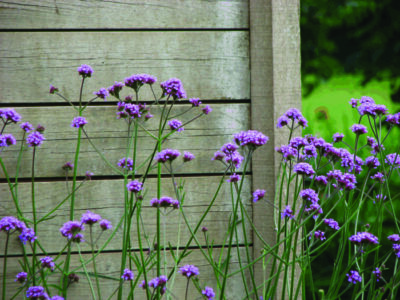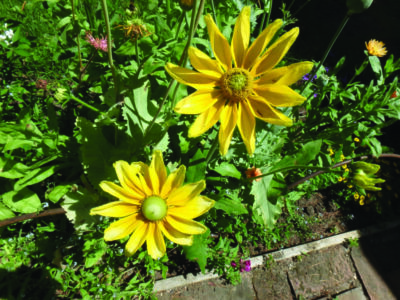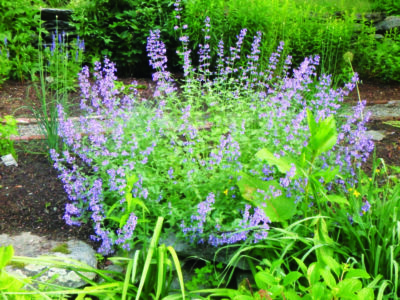Veggies, flowers and trees for a low-effort gardening season
Alright, if one more person tells me they’re not a gardener because they don’t have a ”green thumb,” I’ll scream.
Anyone can grow veggies and flowers, and even plant a tree. Let’s look at 10 plants that will grow for you, regardless of your previous experiences. Just remember, the plants you start will need your attention daily until they have established a good root system and can get enough water in dry times. But if you can brush your hair and teeth daily before going to work, you can visit your seedlings every evening and give them a drink of water if they need it. Once established, they won’t need so much attention.
1. ‘Sungold’ cherry tomatoes
This is a fantastic producer of one of the best-tasting tomatoes in existence. Buy plants from your local nursery. Like all veggies, it needs six hours of daily sunshine or more, average to good soil, and a little water when first planted and in times of drought. It is a big, tall plant, so plant it with a metal cage around it to hold it up, the biggest you can find, preferably 54 inches tall. One plant can easily produce 100 to 200 tomatoes over a long season. I’d suggest two plants minimum, as they taste so good you will eat many on the way to the kitchen. Plant 24 to 36 inches apart. They are relatively disease-free.
2. ‘Bolero’ carrots
This is the gold standard of carrots. Tasty, productive. Its only flaw is that the seeds are tiny so people end up planting them too close together, and then not thinning them by the Fourth of July as they should. One solution? Buy pelleted seeds. They are coated in clay so they are the size of BBs and easy to plant where you want them. Plant in full sun and an inch apart, then thin to 2 inches. Improve your soil with compost — one bag will do for an average seed packet. Carrots need plenty of nitrogen, so add a little organic fertilizer, too. Water daily until the carrots come up, and then weekly in dry times.

Although carrots come in many colors, I like the taste of conventional orange ones best. They certainly have more beta carotene than yellow or white ones. I had great luck with purple carrots last summer — they grew straight and gorgeous, but I found them a bit stringy. All carrots are a great source of vitamins B, C and K and potassium, fiber and antioxidants. Let your kids eat them right out of the ground, just wiped clean or sprayed with the hose.
3. ‘Black-seeded Simpson’ lettuce

Another workhorse readily available in six-packs from your local garden center. Much easier to buy small plants than to start seed. Full sun or light shade, decent soil. Pick leaves for sandwiches as they grow, or wait until they are full-sized and harvest the entire head of lettuce. If you buy seed, you can replant more lettuce every two or three weeks all summer. Be sure to thin out — lettuce seeds are small and it’s easy to plant seeds too close together.
Lettuce comes in many colors and textures. Your vegetable garden will come alive if you plant reds and greens or frizzy leaves and smooth leaves in patterns. Alternate them, planting seedlings 6 inches apart. Think of your garden as a painting, the plants as the colors and shapes that please your eyes.
4. Bush beans
Plant seeds in average soil in full sun after soil warms and there is no chance of frost. Bean seeds are big, easy to plant. Plant seeds 2 inches apart, thin to 4 inches. Rows 8 inches apart. Bush beans come in three colors: green, yellow and purple. The yellow ones have a distinct taste, but the green and purple taste the same to me. Purple beans turn a tepid gray when cooked, so serve them raw in salads when having guests. All freeze well.
Pole beans are easy to grow, too. ‘Kentucky Wonder’ is an old favorite. There is some extra work in growing pole beans: You have to build a trellis or cut some poles for a tripod they can climb. The rewards can be big: So long as you keep picking pole beans, they will keep or producing more beans. Not so for bush beans — they produce for three weeks and are done.
5. Verbenas

These are annual flowers that bloom all summer. There are many named varieties sold as plants ready to bloom at garden centers, all good. “Superbenas” are hybrids that are worth the extra price. They take hot and dry better than many annuals.
My favorite verbena is unusual: Brazilian verbena (Verbena bonariensis) is 4 to 6 feet tall on thin strong stems that need no staking. Monarchs love them for their pollen and nectar in late summer.
6. Marigolds
Marigolds come in a dozen sizes and colors — or more. They are a classic flower that loves hot, sunny places but will take some shade. They are quite fragrant. Great in containers or in the ground. Buy plants in six-packs to have plenty. Some people plant marigolds around their tomatoes to keep away insect pests. I’m not convinced that they really do that, but the color is a nice addition to the vegetable garden.
7. ‘Prairie Sun’ Black-eyed Susan

These flowers are a perennial that keep on blooming from July to Halloween. In Zone 4 or colder it is not fully hardy, so I buy some every year. Some survive my winters, some do not. It’s a great cut flower. Likes sun, but will take some shade. It isn’t really a black-eyed Susan, as the center eye is green. Another really hardy black-eyed Susan is called ‘Goldsturm.’ It blooms nicely, year after year, in late summer.
8. Catmint

Catmint (Nepeta faassenii) is a perennial that loves hot, dry locations. It has light blue flowers that bloom for a long time. Not to be confused with catnip; your cat will leave it alone — and so will bugs. Bees and hummingbirds like it, but deer and rabbits don’t. ‘Walkers Low’ is a good one, 24 to 30 inches tall and wide.
9. Fothergilla

This is a native shrub that blooms early in the season with white bottlebrush flowers. Its best season, however, is fall. It has great fall foliage with red, orange, yellow and purple leaves all on the same bush. Relatively slow growing, doesn’t require annual pruning. But that also means buy the biggest plants you can find. It takes time to get to full size — about 6 feet tall and wide.
10. Oaks of all sorts

These are the best trees for supporting pollinators as their caterpillars feed on the leaves. Caterpillars feed our baby birds, providing about 90 percent of their diet or more. Doug Tallamy, a Ph.D. entomologist in Pennsylvania, determined that a clutch of chickadees consumes between 6,000 and 9,000 caterpillars from hatching to fledging. If we don’t provide enough native plants like oaks, we won’t have food for our baby birds. You can help.
The pin oak (Quercus palustris) is one of the most used trees in the Northeast: it is fast growing and tolerant of pollution, compacted soils, road salt. A small one will grow 12 to 15 feet in five to seven years.
Think about planting an oak in the middle of your lawn as a specimen tree. It will attract birds, pollinators, and the acorns will feed wildlife. You don’t have to buy a seedling. In the spring look under an oak tree and try to find an acorn on the ground that has sprouted. Plant it where you want a majestic tree. Water weekly the first summer. Oaks are some of our most long-lived trees. I saw one in Pennsylvania at a Quaker meeting house that was said to be 300 years old.
Over the past 55 years I have planted more than 100 kinds of trees and shrubs in my 2-acre yard, and probably even more kinds of flowers. I eat veggies from my garden all year as I freeze and store them. Not everything works 100 percent of the time for me, but plants have evolved to succeed. So try planting some this summer. In the ground, in a pot or in a window box. You’ll be pleased and proud when your efforts succeed. I know I am.

